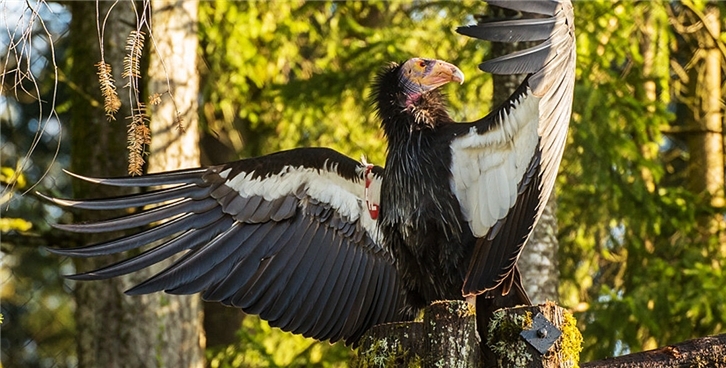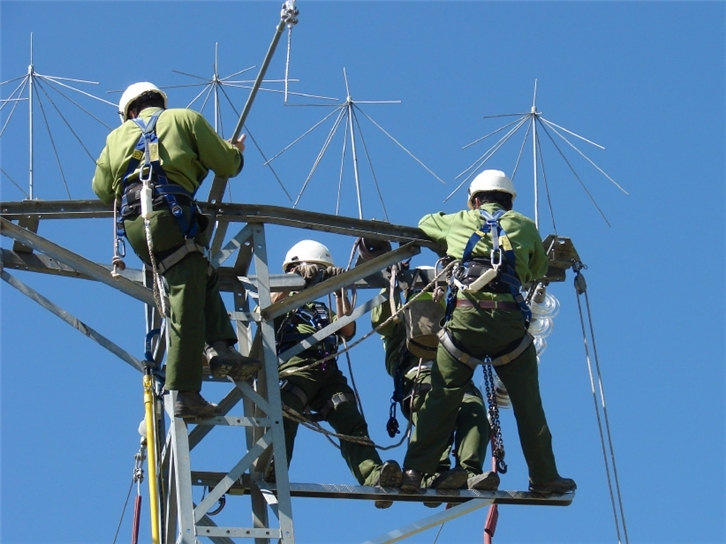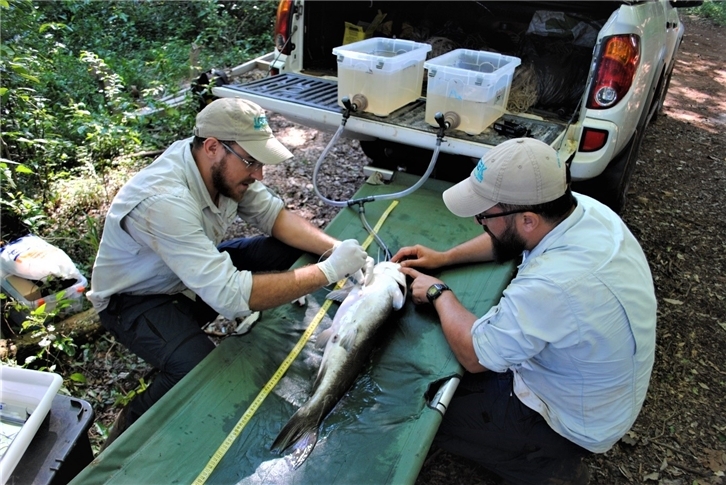News
The company publishes its Biodiversity Report 2018-2019 to coincide with World Environment Day, the main theme of which is biodiversity
Iberdrola has carried out more than 1,450 activities to protect biodiversity around the world since 2018
- The group is on the path to achieving zero net loss of biodiversity by 2030 and all their projects entail a thorough environmental plan to minimise any impact on flora and fauna
- In Spain, the company has spent 40 million euros on vegetation protection and management actions over the last two years and, in 2019, overhauled nearly 30,000 kilometres of power lines, almost twice the distance between Puerta del Sol and Antarctica
Iberdrola, committed to preserving healthy ecosystems as a crucial aspect of sustainable growth, has carried out more than 1,450 actions related to protecting biodiversity in the last two years. All this appears in the Biodiversity Report 2018-2019, published to coincide with World Environment Day. According to the report, during 2018, Iberdrola carried out more than 650 actions in this area, and more than 800 in 2019.
These practices are in line with the Iberdrola group Biodiversity Policy, approved by the Board of Directors, the purpose of which is to include conservation of biodiversity in the planning and subsequent development of all the company's activities. To make progress in this regard, Iberdrola has committed to achieving zero net biodiversity loss by 2030.
To achieve this, it will continue to apply the highest standards of protection based on the hierarchy of mitigation and will work shoulder to shoulder with the scientific community, administration and non-governmental organisations to develop and implement methodologies that quantify the impact of biodiversity and its ecosystem services. It will continue to encourage biodiversity preservation, collaborating on conservation projection with its stakeholders.
In Spain, Iberdrola has been developing a programme for the adaptation of power lines to prevent electrocutions for many years, with which it has adapted tens of thousands of supports in areas declared to be bird protection areas.
The improvements made to the power lines consist of lining the different phases and connections of the supports, increasing the safety distance, replacing the crossarms with others specially designed to protect birds and installing anti-nesting devices, among other measures.
In addition, more than 2,700 electric line maintenance and renovation actions have been carried out to reduce all types of risks in these facilities, where bird protection elements have been fitted and armor and insulators have been renewed to reduce the risk of damage to fauna.
Among the actions to protect and manage vegetation, Iberdrola has allocated 40 million euros in the last two years to initiatives such as the Flash, which carries out an exhaustive analysis of all the power lines, as well as the environment, using a helicopter with a LIDAR (Laser Imaging Detection and Ranging) camera. In 2019 alone, nearly 30,000 kilometers of power lines were checked, almost twice the distance between Puerta del Sol and Antarctica.
Among the biodiversity actions in construction projects, the environmental protection plan developed at the photovoltaic solar plant in Núñez de Balboa, in Extremadura, stands out. During its execution, orchid species of special interest were avoided, an area for the sighting of Montagu's harrier was excluded from the project area, and it was fenced off on site for its protection, and specific measures were taken to respect the mating periods of the bustard and the nests of the bee-eater and long-eared owl. In addition, a Conservation Plan has been developed around two cattle ponds and nest boxes have been placed in all the line's supports adapted for Lesser Kestrel and Common Kestrel.
The enormous Southern Europe battery gets 1,000 sampling stations
Another of Iberdrola’s large-scale renewable projects, the Támega hydro-electric complex in Portugal, also required painstaking specific analyses of fauna, flora, habitats, water assets, etc. This complex will consist of three power stations, one of which is a pump system set to become Southern Europe’s largest battery.
Among other measures, the group continuously monitors flora and fauna, with eight environmental specialists on site and specific programmes by species: mammals, Iberian wolf, birds, bats, fish, freshwater mussels, invertebrates, protected flora, otter and Pyrenean desman. Iberdrola also has 20 biologists for ad hoc tasks, 1,000 sampling stations and 80,000 hours spent monitoring species.
Also in this project and always under the supervision of environmental experts, more than 2,000 amphibians, 23,000 freshwater mussels, 41,000 fish and nearly 1,500 specimens of protected flora have been moved, as well as another 500 specimens of various reptiles, birds and mammals.
Protection and study of porpoises in the North Sea
Among Iberdrola's most outstanding environmental plans is the East Anglia ONE offshore wind farm in UK waters. Located 43 kilometres off the coast and with a capacity of 714 megawatts, it has required important measures to protect marine fauna.
For example, a Specific Marine Mammal Mitigation Protocol (MMMP) was designed before work began and implemented during offshore construction to avoid or minimise potential injury or disturbance to marine mammals.
On the same lines, the company is currently carrying out a research project in the area, which aims to use data on underwater noise gathered before, during and after the installation of wind turbine foundations at sea to improve the prediction models of these animals' reactions.
A biodiversity corridor in Iguazú and condors with radio frequency in California
While building the Baixo Iguaçu hydroelectric plant which was commissioned in 2019 by Neoenergia, Iberdrola’s Brazilian subsidiary, a company listed on the São Paulo Stock Exchange, a biodiversity corridor was created to connect forests and permanent conservation areas of the plant with protected areas of the Iguaçu National Park. This corridor will allow fauna to be transferred to the remaining forest, creating a suitable habitat for the development and conservation of species.
Also on the other side of the Atlantic, Avangrid, a subsidiary of the Iberdrola group listed on the New York Stock Exchange, is carrying out numerous actions for biodiversity. One of its most avant-garde facilities is the Manzana wind farm in California Most of the condors in this State have been fitted with radio frequency devices and GPS technologies to track their movements. So, when a condor carrying a transmitter crosses the boundary of the geofence that the company has installed in this wind farm, the Avangrid National Control Centre slows down some of the turbines in the vicinity of the condor to minimise the potential risk.
Another major project in the Americas is run by the Iberdrola Mexico Foundation, in partnership with Pronatura, the Government of Durango and its Secretariat of Natural Resources and Environment, which is conserving and protecting the Fernandez Canyon, one of the most important nature reserves in northern Mexico.
The project is restoring the Cañón de Fernández state park, one of northern Mexico’s most valuable nature reserves and home to more than 580 species of flora and fauna on 17,000 hectares of protected land.









